As a cosmopolitan city, with great museums, parks, restaurants and warm friendly people, Tehran has earned itself the rather unenviable reputation as a smog-filled, traffic-clogged and featureless sprawl of concrete bursting at the seams with 15 million residents. But meanwhile, this metropolis is a heaven for museum lovers and keen travelers. It’s the city of monuments, museums, palaces and interesting sights, so much that some of its major tourist spots may be hidden or lost in the hustle and bustle of its streets. But most of visitors do not know that how their Tehran visit can be interesting if one know the highlights and the Tehran Facts. It deserves at least a few days of your Iran itinerary.
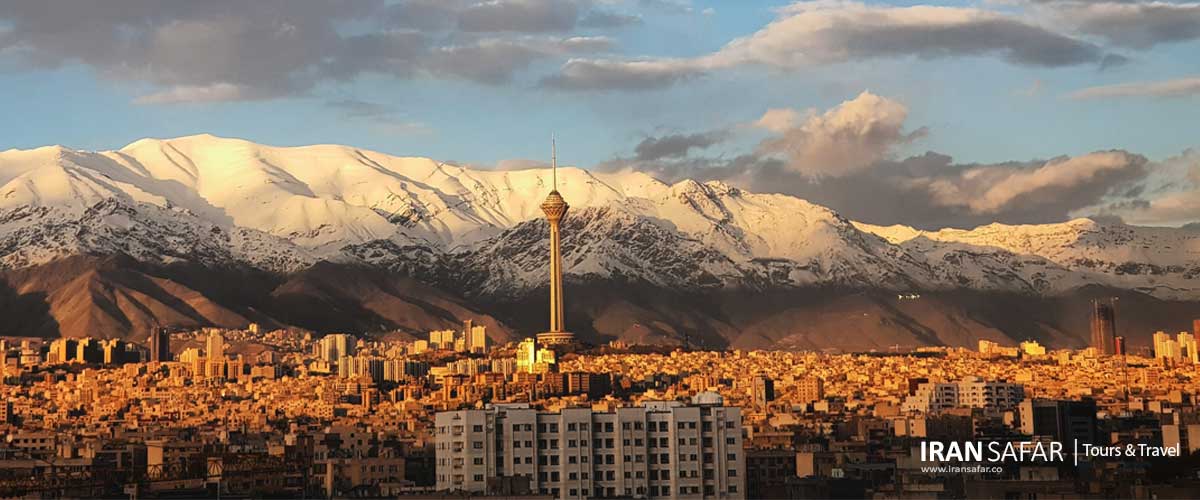
History of Tehran
Back in ancient times, the village of Tehran was overshadowed by the city of Rey – the capitals of the Seljuk dynasty. In 1220 the Mongols invaded Rey as they swept across Persia, executing thousands in the process. Most who escaped fled to Tehran and the future capital’s first population explosion turned the village into a prosperous trading center.
In the mid-16th century Tehran’s natural landscape, lush gardens, clear rivers and good hunting areas brought it to the attention of the early Safavid king, Tahmasp I. Under his patronage, gardens were planted, some famous caravansaries were built and the town fortified by a wall with 114 towers. As Tehran continued to grow under later Safavid kings, European visitors wrote of the town’s many enchanting vineyards and gardens.
During Zand dynasty, Tehran was a little town that was significant from a strategic point of view. The first of the Qajar kings, Agha Mohammed Khan, chose Tehran as the country’s capital in 1778, and most of its growth started during the reign of a subsequent Qajar monarch, Fath-Ali Shah. The castle built by Agha Mohammed Khan was to contain the new majestic buildings. During reign of Nasser Al-Din Shah the city’s master sketch was prepared and modern streets were constructed. Later, huge central squares like Toopkhaneh square (now Imam Khomeini) and quite a few military buildings were built. Although Qajar dynasty was in a period of decline, Tehran soon took the shape of a modern city. The structure of large government buildings, new streets, urban service organizations, and academic and methodical centers were started, even as most of the old gates and buildings were destroyed and the city’s old architectural fabric replaced by a contemporary one.
Top places to see in Tehran
Tehran is a city of parks and possesses more than 800 of them, all well-kept. The city is nearly a mile high above the sea level and as a result is cooler than other cities in the middle east. Summer temperatures are around 32°C or about 90-95°F. The air tends to be very dry.
A combination of factors make Tehran a pleasant place to visit: The dry climate which is constantly cool (at least in the evenings), the proximity of the mountains, the parks and gardens where flowers blossom all through the year, the alleys of trees in the avenues or even smaller streets, and even the water that runs down from the upper city along deep and wide gutters which look like small rivers during spring.
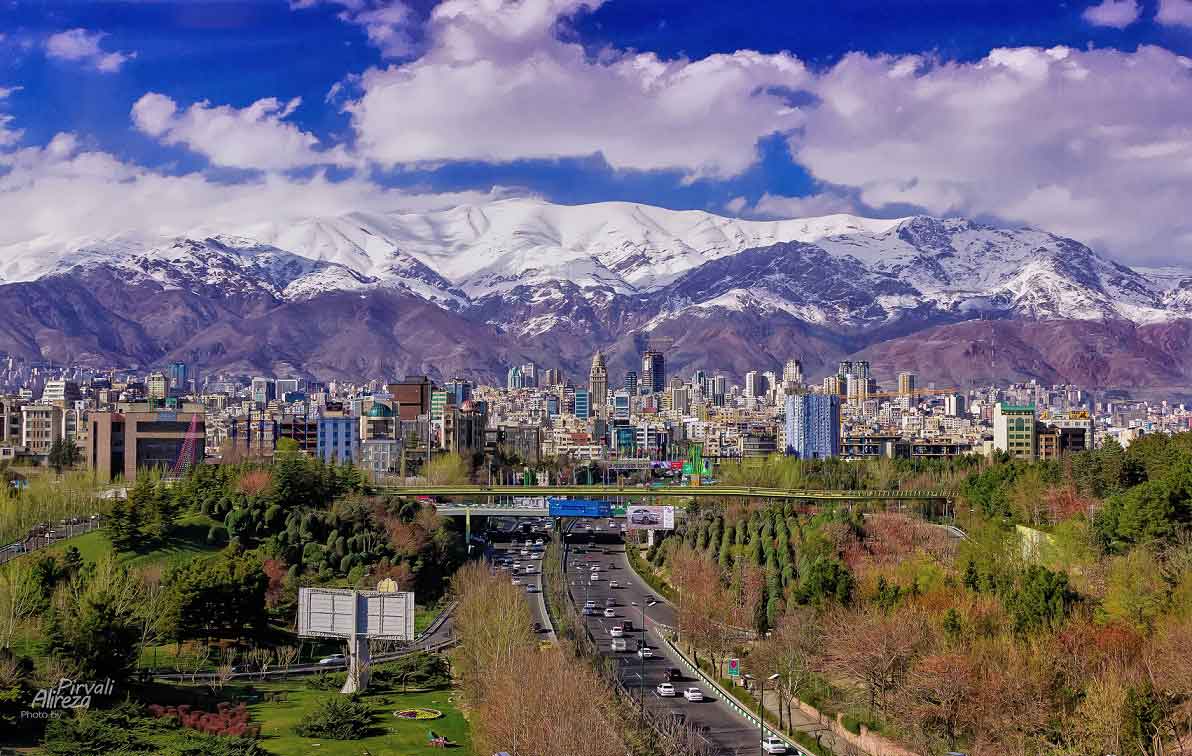
The Alborz mountain range on the north of Tehran, which hosts Mount Damavand -the highest peak in Iran- provides fantastic conditions for ski lovers in the winter. In winter, the mountain hotels and ski resorts at Shemshak, and Dizin are full several days a week. Some specialist skiers consider the snow value in northern Tehran to be one of the most excellent in the world. The main feature of Tehran tourist centers are its interesting museums such as Iran National Museum which is known as the first Iranian archaeological museum, divided into two sections based on different periods of Iranian history: Pre Islamic and Islamic periods, the Iran Carpet Museum comprises of two halls displaying some finest Persian carpets from different regions and Glassware Museum (ABGINEH) which is a beautiful Qajar building full of interesting objects.
During your stay you can also enjoy visiting Tehran palaces such as the 410 hectares Sa’ad Abad Complex which was the residential palaces of Mohammad Reza Shah, his father and some members of the former Iranian royal family , Niavaran palace complex in north east Tehran and the famous Golestan palace dating back to Qajar era.
Guide to visit Tehran
Here is a list of Tehran must sees:
1
Golestan Palace
The Golestan Palace is a complex of palaces and buildings remaining from the historic citadel of Tehran, the residence of the Qajar dynasty and is considered one of the most beautiful and oldest buildings in Iran’s 200-year-old capital.
The Golestan palace, originally dating back some 442 years, represents a unique and magnificent document of the Safavid, Qajar and Pahlavi era’s architecture and decorative arts, which peaked under Nasser al-Din Shah. This is the first example of a combination of European and Persian style, which later became one of the hallmarks of the Iranian art and architecture in the late 19th and early 20th centuries.
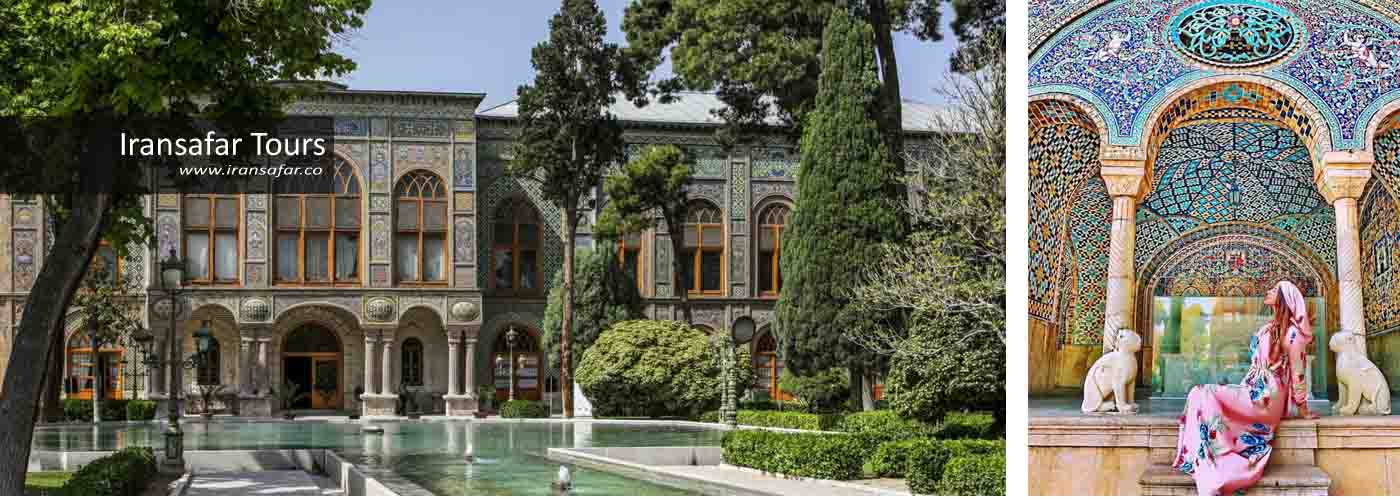 Golestan Palace, Tehran, Iran
Golestan Palace, Tehran, Iran
The glories of the Qajar Era are played out across this complex of palaces ornamented with mirrors, paintings, glazed tiles. Set around an elegant garden, there are several buildings with 17 different visitable sections including the Salam Hall, the spectacular Mirror Hall, Ivory Hall, Negar Khaneh (Iranian Painting Gallery), Antropology museum, Marble Throne terrace, Karim Khani Nook, Shams ol-Emareh edifice, Aks Khaneh (Qajar photography museum), Almas Hall, Abyaz Hall and Badgir Hall.
Please note: You need to buy separated tickets for the above sections at the gate.
Although there was an original Safavid Empire era small citadel on this site, Nasser al-Din Shah Qajar (r 1848–96), impressed by what he’d seen of European palaces, ordered to add new buildings to his Golestan (Palace of Flowers). Originally, Golestan complex was bigger than what you see today, but most government sections and the Harem were demolished due to urban projects under the Pahlavi dynasty.
Read – The ultimate guide to Golestan Palace
2
National Museum of Iran
Considered as the main museum of Tehran, Iran National Museum is the first choice for travelers who are interested in archeology and history. The visitors of the museum can follow up the whole history of Iran from the Paleolithic Era to the Qajar period (early 20th century). Due to its location at the heart of Tehran, it is easy to include the museum to a day tour of Tehran.
The National Museum of Iran is the most important museum in the country in terms of preservation, display and research of Iranian archaeological collections. Currently, the National Museum exhibits about 300,000 objects that reflect the richness of Iranian culture and civilization, art, economic growth, and technological achievements.
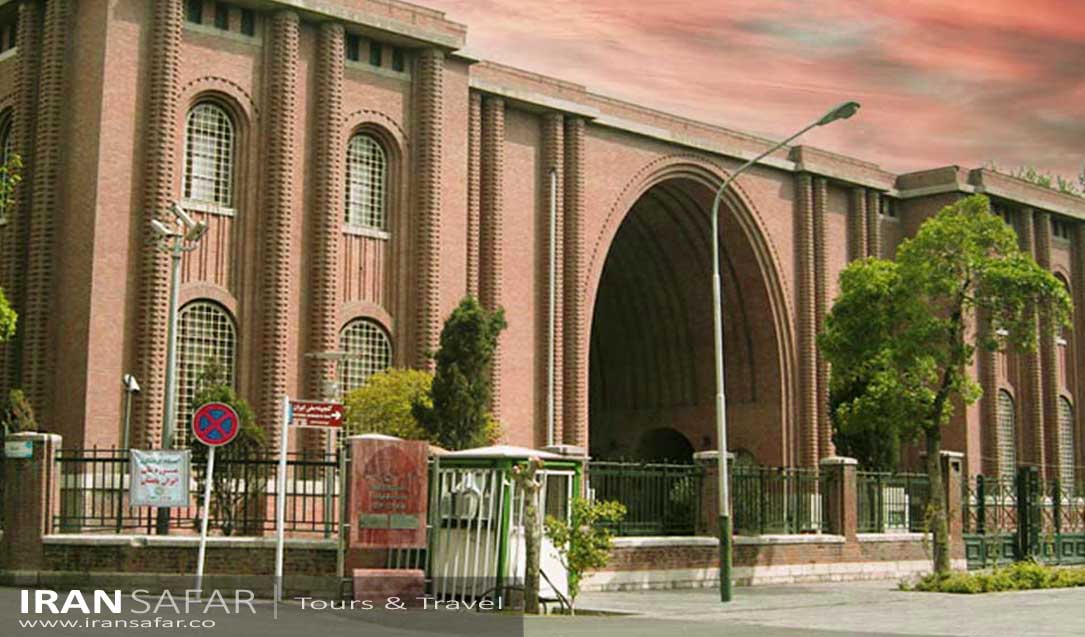 National Museum of Iran, Tehran, Iran
National Museum of Iran, Tehran, Iran
National Museum of Iran consists of two buildings, built one after each other. The construction of the main building began in 1935 under supervision of André Godard, French architect and archaeologist. It is decorated with red bricks in the form of a horizontal rectangle lying on the ground, consisting of three separate parts that are interconnected. The impressive arch-shaped entrance is an inspiration from Sassanian architecture. This old building exhibits the prehistoric and pre-Islamic objects and is called the Museum of Ancient Iran. On the other side of this old building, you will find a relatively new building that hosts the Museum of the Islamic Period. It is a three-story building with a ground floor dedicated to temporary exhibitions and a meeting hall. The first floor is dedicated to objects from the Timurid, Safavid and Qajar periods, and in the second floor you will see works from the early Islamic period, the Seljuks and the Ilkhanids.
Read – Full guide to the National Museum of Iran
3
Niavaran Palace Complex
Niavaran region is located in north Tehran, near the Alborz mountain range. In 19th century, it was chosen as a summer residence for Iranian kings during the Qajar era. In the past, the Niavaran complex in Tehran was much smaller than today and was located outside the city. Due to the proximity to the mountains and the excellent climate in this region, Fath Ali Shah – the second king of Qajars- ordered to build a garden and a mansion as his summer residence.
Years later, during the Pahlavi era -the last royal dynasty of Iran- Niavaran Palace was first chosen as a place to receive foreign guests, and then it became the residence of the king Mohamad Reza Pahlavi and his wife, Farah Diba, and their children.
Read – Full guide to Niavaran Palace Complex
4
Sa’adabad Palace Complex
The Saadabad palace complex (also Sa’ad Abad) is located in north Tehran. This site was originally the summer residence of the Qajar king Ahmad Shah in the 19th century and later was converted into the main residential complex of the Pahlavi family in 20th century. Saadabad complex was built in a large garden with a total area of about 300 hectares.
After the Islamic revolution, it was turned into a public museum. Saadabad garden with its tall trees, orchards and beautiful nature alone is a great attraction for visitors in different seasons of the year. In this article, we are going to introduce some of the most important parts of this complex to you.
Read – Full guide to Sa’ad Abad Palace Complex
5
Vali Asr Street
The most important street in Tehran and one of the most beautiful streets in the world, Vali Asr street is about 18 kilometers long and has been in the list of Tehran’s highlights in various periods of Tehran’s history. According to some documents from 19th century, north of Vali Asr Avenue was the promenade of the Qajar family and their summer palaces were located there.
This street connects the northern and southern parts of Tehran. Railway Square is the starting point and Tajrish Square is the last destination of Valiasr Street. This street can be considered the center of Tehran’s art cafes
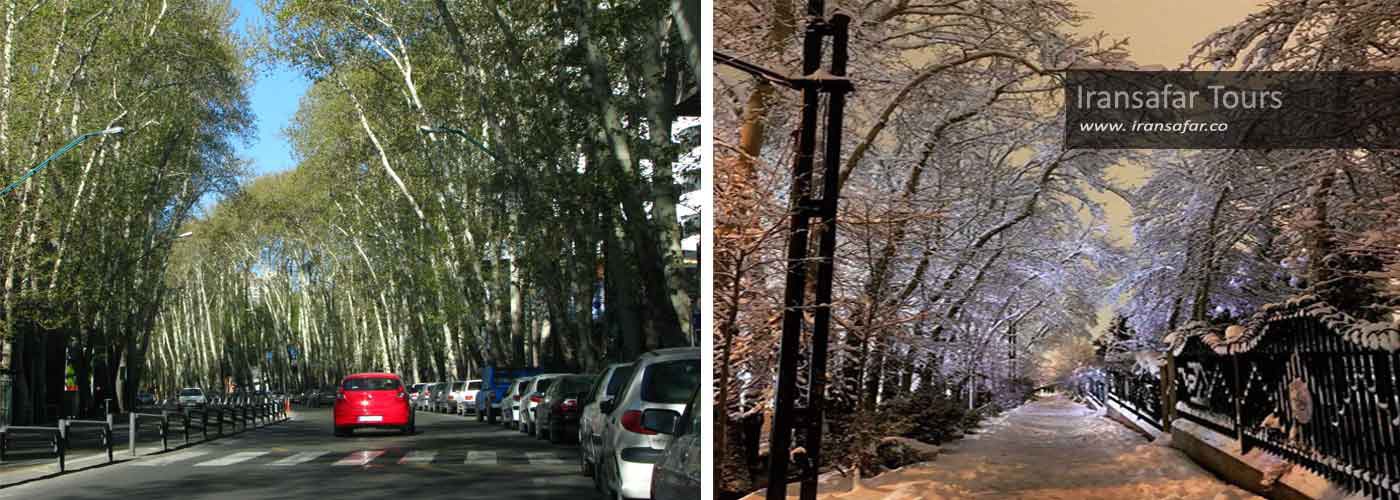 Vali Asr Street, Tehran, Iran
Vali Asr Street, Tehran, Iran
Enjoying the beauty of Valiasr Street is not limited to walking on Valiasr Street under its tall and old plane trees. There are some popular and important public parks on this street which are worth a visit. Mellat Park is the largest on Valiasr Street. This old park is one of the most important sights of Tehran at the intersection of Nayyeh and Valiasr highways.
The park is decorated with urban elements and various sculptures; therefore it is perfect for photography, especially in the fall. Melat Cinema Complex is also located in this park.
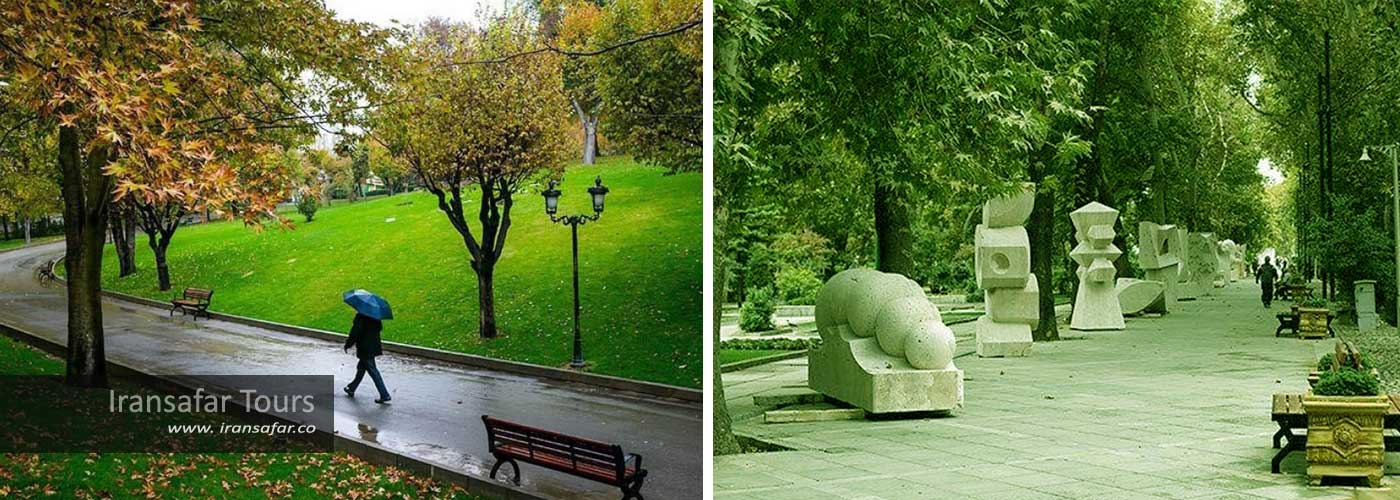 Mellat Park,Tehran, Iran
Mellat Park,Tehran, Iran
6
Cinema Museum of Iran (Ferdows Garden)
At Valiasr Ave and not far from Tajrish Square, there is an old and beautiful garden at the end of which is a historic mansion. Ferdows Garden is one of Tehran’s most famous gardens and today it has been transformed into a cinema museum with its mansion and one of the most spectacular places in Tehran. Don’t miss this autumn walk!
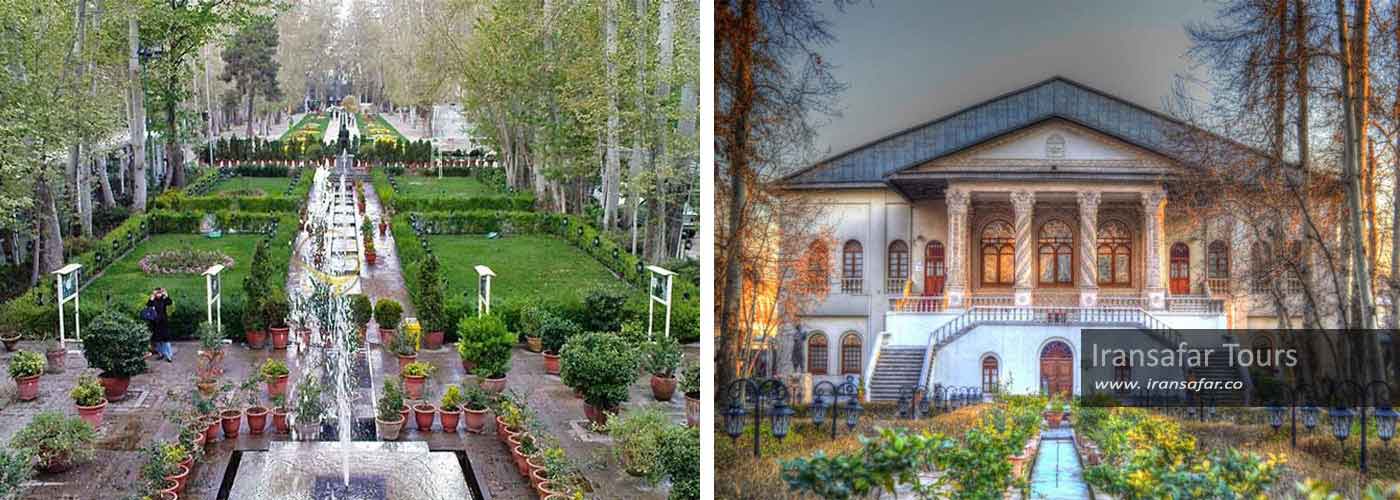 Ferdows Garden,Tehran, Iran
Ferdows Garden,Tehran, Iran
7
Tajrish Baazar
Tajrish Traditional Market, on one side to Tajrish Square, on the other side to shrine of Imamzadeh Saleh and the surrounding streets, has been one of North Tehran’s oldest shopping centers and still retains its old atmosphere. Although the construction of a modern market in new style alongside the completely traditional form of the market has influenced it, the old and famous market shops have not lost their identity. The old roofed Bazaar of Tajrish is a small example of Tehran Grand Bazaar.
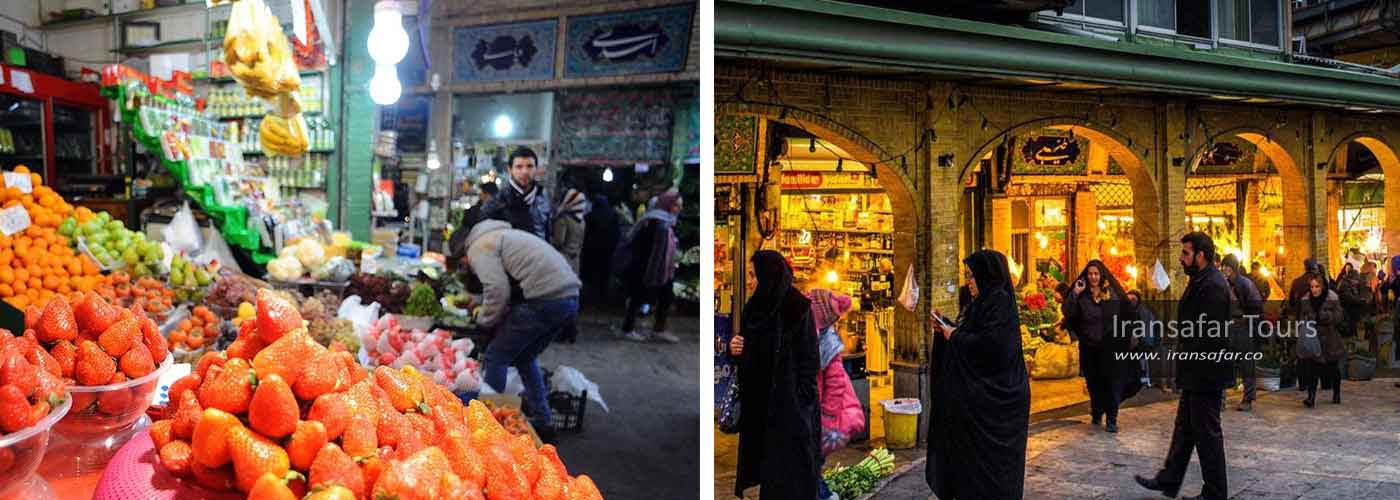 Tajrish Bazaar,Tehran, Iran
Tajrish Bazaar,Tehran, Iran
In the Tajrish market, which consists of small “Souks”, there is an indoor fruit and vegetable section, which is a very attractive and beautiful place. Of course, this square is originally the location of Tajrish “Mourning Square” which is used in occasion of Muharram Rituals and after tenth Muharram is leased to the fruit market. The Tajrish market, like other traditional markets, has a mosque and a Hussainiyah.
Tajrish Bazaar History
There is a lot of speculation about the history and construction date of this market. According to some sources, the date of construction goes back to 70 years ago. However, the market’s old businessmen believe that Tajrish Bazaar is much older and about 150 years old. Of course, some of the structures that exist in this place are about 200 years old such as Tajrish Tekyeh, which is said to have existed there for 220 years.
Tajrish Bazaar was quite open at the beginning of its formation. This caused trouble for shopkeepers and shoppers in the fall and winter seasons, so in 1973 the corridors got covered with wood and tin plates and replaced over time with a monolithic iron roof. A few years later, the market obtained its new magnificent appearance with the renovation performed by Cultural Heritage and Tourism Organization.
Tajrish Bazaar (Tehran) opening hours
Everyday from 09:00 AM to 08:00 PM
Read – Best Bazaars in Iran
8
Azadi Tower
Azadi square is one of the largest squares of Tehran where the Azadi Tower with forty-eight meters height is standing in the middle as the symbol of Tehran. The Azadi Tower (meaning freedom) formerly known as “Shahyad” was built as a symbol for the capital during the reign of Mohammad Reza Shah Pahlavi.
The Azadi Cultural Complex, consisting of several sections, is located on the lower floor of the Tower and includes a museum, library, audiovisual unit, exhibition hall, meeting hall, concert & conference hall.
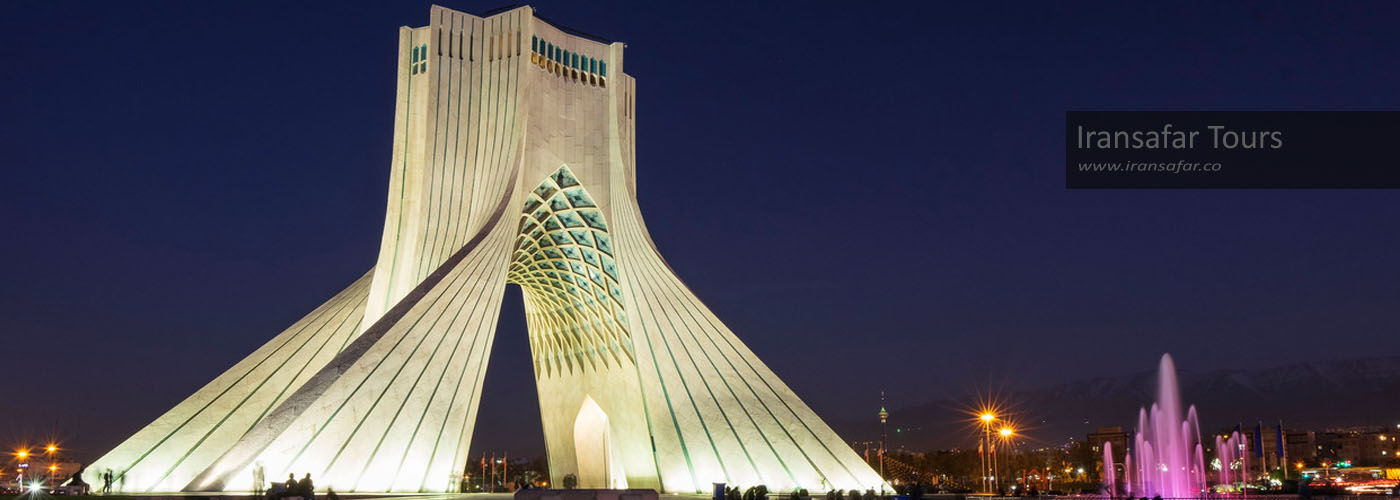 Azadi Tower, Tehran, Iran
Azadi Tower, Tehran, Iran
History of Azadi Tower
Azadi Tower was built in 1970 by Iranian architect Hussain Amanat, who is now a Canadian citizen. At that time, Amanat was a 26 year old student on a mission to design a square in the capital to mark “the symbol of modern Iran” and “the Gateway of the great civilization”
Earlier, In 1966, an architectural design that could symbolize Iran was put on the competition among Iranian architects, and eventually Mr. Amanat’s design was selected by the University of Tehran to be constructed. Operation of Azadi Tower started in November 1969, and ended in September 1970 and was inaugurated on January 5th, under the name of Shahyad Tower.
On the opening day, the Shah and his wife were present at Shahyad Square, and the Cyrus Cylinder, the world’s first human rights charter, was unveiled for the first time. This cuneiform tablet was inscribed about 2550 years ago by Cyrus and is now kept at the British Museum in London.
The total area of the square is about 78,000 square meters and the tower is built in shape of a gate which connects ancient Persia to Modern Iran.
“This is based on the past of Iranian history,” says Hussein Amanat, architect of Azadi Tower. “I wanted to show the ones coming from abroad or even the Iranian people that where and what culture this work belongs to.”
Read: Azadi Tower – Theran’s Iconic Landmark
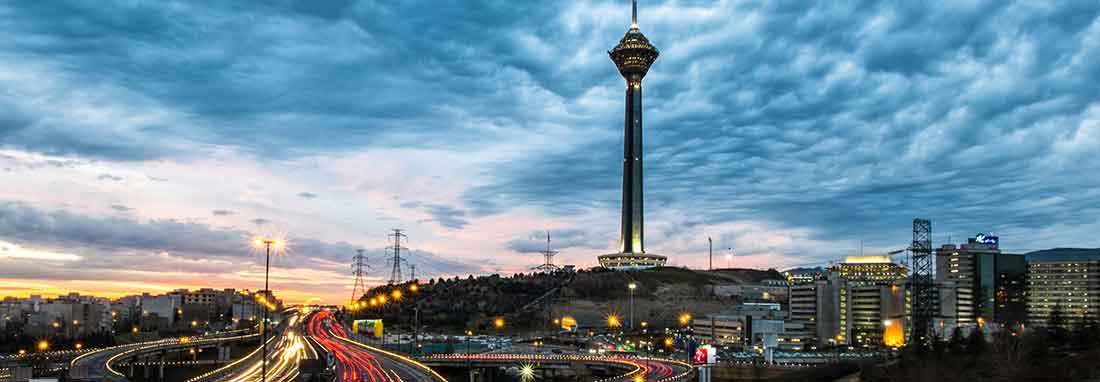 Milad Tower, Tehran, Iran
Milad Tower, Tehran, Iran
9
Milad Tower
Milad Tower is a multipurpose telecommunication tower located in northwest of Tehran, on top of a hill of approximately 14 hectares in the south of Shahrak-e Gharb district. With 435 meters height (315 meters high for concrete shaft and 120 meters high for tower antenna), Milad Tower is the tallest tower in Iran, and the sixth tallest telecommunication tower in the world.
With 13,000 meters of built up area, Milad is the first of all world’s telecommunication towers in terms of grandeur of tower’s 12 storey top structure. Due to its great height and different appearance, this structure is visible almost everywhere in Tehran and is therefore one of the symbols of the Iranian capital.
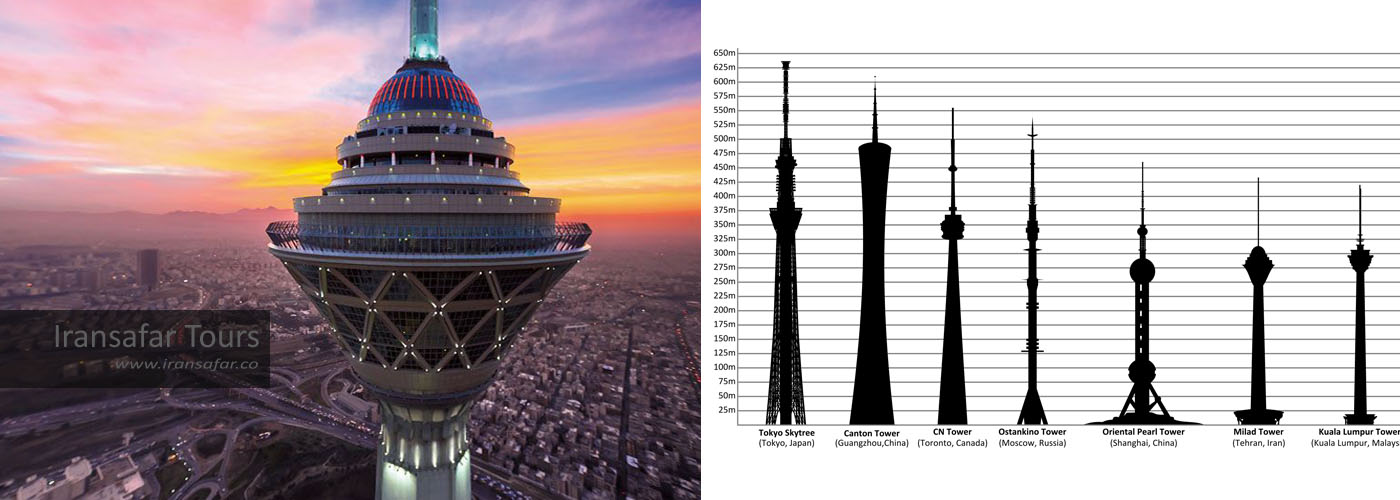
✔ What to do at Milad Tower?
According to the global statistics, Milad tower is the sixth-tallest of its kind and the 24th tallest freestanding structure in the world. Entrance tickets are cheap by international standards, and the elevator is rather exciting as you can see the view with the glass panels surrounding you.
Open Observation Deck
On the upper open observation deck, depending on how clean is the air, you can often see for miles around, making it a perfect spot for view photographers. The megacity of Tehran is breathtaking from the open observation deck.
The Waxwork Museum
Celebrity museum of Iran is located on the fifth floor of the Top building, at a height of 271 meters. This beautiful Madam Tussauds-like museum is a collection of statues of Iranian celebrities made by Dr. Alireza Khaghani. This museum is the first museum where the statues of Iran’s famous celebrities are exhibited.
Milad Tower Revolving Restaurant
This restaurant is the most fascinating part of the restaurant tour in Milad Tower. The restaurant is 276 meters high and has two moving and fixed sections. The revolving part rotates 360 degrees every hour. A variety of Iranian and international cuisine can be enjoyed at this unique Milad Tower buffet restaurant. Watching the sunset and eat with friends here will easily make one of your most memorable nights.
Milad Tower Dolphinarium
There is only one place in Tehran where you can see dolphins. The Milad Tower Dolphinarium is the only dolphinarium in the Middle East. With a total area of 3200 M2 Milad Dolphinarium has a capacity of 1200 spectators. Ocean simulation technology has provided life for dolphins and sea lions to delight you in performing beautiful acrobatic moves.
10
Iran Museum of Contemporary Art
Tehran’s Museum of Contemporary Art is one of Iran’s most famous art museums, which houses the largest treasures of modern art outside Europe and North America. The museum owns one of the five major collections of modern art in the world and consists of 9 galleries: 3 permanent Exhibitions containing more than 4,000 works by Iranian and world artists museum treasury, and 7 galleries dedicated to temporary and seasonal exhibitions. The Museum of Contemporary Art is one of the sights in Tehran that art lovers occasionally have to make their way to. Just remember this museum is not open on weekends and make sure it is open before leaving.
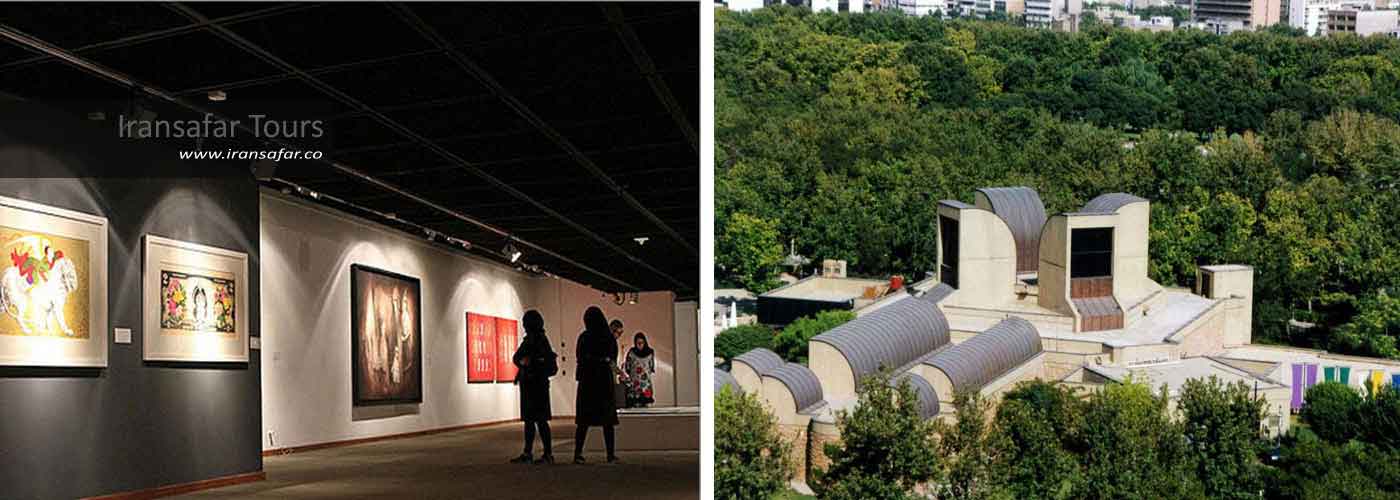 Museum of Contemporary Art, Tehran, Iran
Museum of Contemporary Art, Tehran, Iran
11
Tehran Grand Bazaar
Tehran Bazaar is one of the oldest, largest and at the same time, the most vibrant Tehran public places, always packed by locals and tourists. The primary construction of the market is from 17th century but the present structure is mostly dating back to 19th century – Qajar Era.
The old parts of Tehran Grand Bazaar are constructed with ceilings in the form of vault and domes and enjoy a unique and sophisticated architecture. winding corridors, arches and traditional vents are the architectural beauties of Tehran Bazaar. But this beauty and complexity didn’t exist at the beginning of the market. Over time, the market expanded; for example, parts of it got roofed due to the summer heat.
These developments also took place in service areas, with cafes, tea houses, Bastani sport Zurkhanehs, baths, mosques, etc. In each department, new corridors were created that were particularly for the sale of special goods, each of which was a big market itself.
The Tehran Bazaar complex is still regarded as one of the most active economic hubs in Tehran. If you want a cheap and affordable purchase, do not forget about the Tehran market. Just remember the market is not open on holidays.
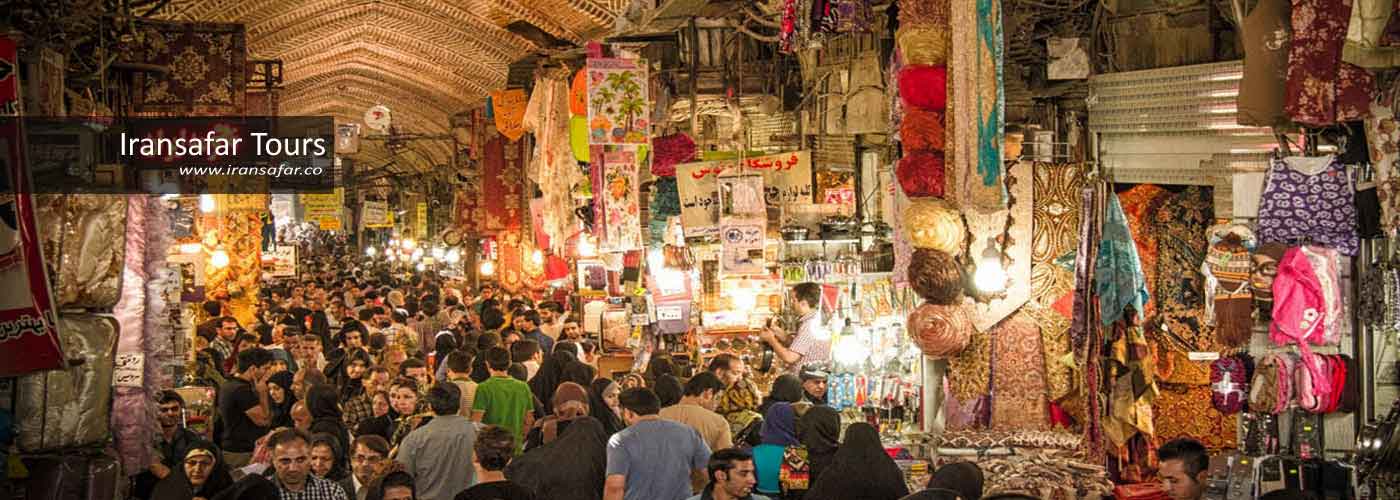 Grand Bazaar, Tehran, Iran
Grand Bazaar, Tehran, Iran
Golestan Palace: A UNESCO World Heritage Site, Golestan Palace is a stunning complex that showcases the rich history and architecture of Iran. It features beautiful gardens, royal buildings, and intricate tilework.
Grand Bazaar: Tehran’s Grand Bazaar is one of the largest and oldest covered markets in the world. Here, you can wander through a labyrinth of shops selling spices, textiles, carpets, handicrafts, and more. It’s a vibrant place to experience the local culture and indulge in some shopping.
National Museum of Iran: This museum houses an extensive collection of artifacts and artworks that depict Iran’s history from ancient times to the Islamic era. It’s a great place to learn about the country’s culture, archaeology, and art. These attractions represent just a glimpse of what Tehran’s downtown has to offer. The city also boasts numerous parks, restaurants, theaters, and shopping malls that cater to different interests and preferences.
Click on the map to enlarge
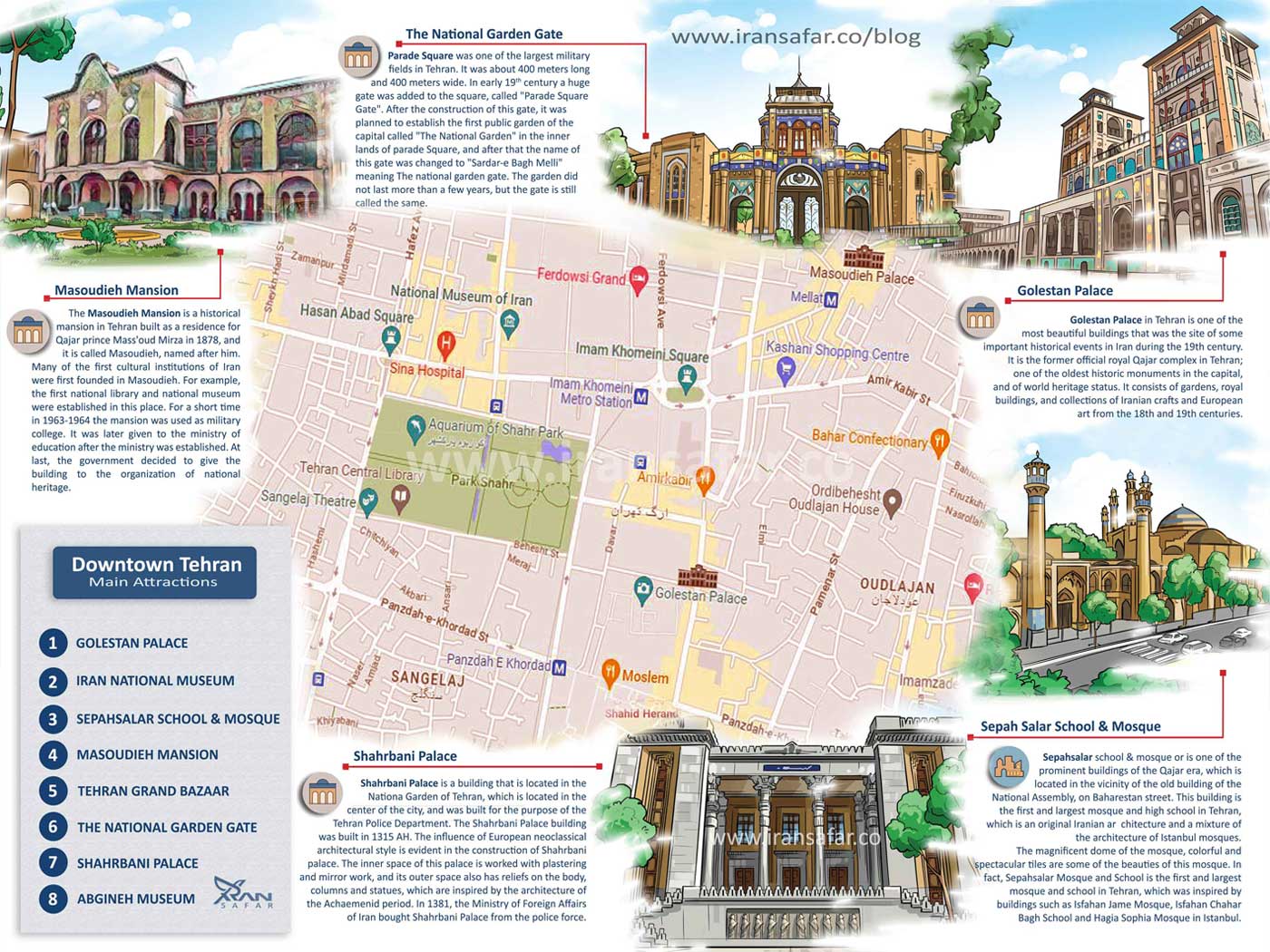 Tehran downtown informative map
Tehran downtown informative map
12
National Jewelry Museum of Iran
The current treasury of the National Iranian jewelry Museum or Iran Crown Jewels is one of the most fascinating places in the world! The museum displays royal jewels from the Safavid, Afshar, Qajar, and Pahlavi periods; famous jewelry such as the Diamond of “Darya-i-Nur”, the Nadir’s Jegheh, the Crown of Farah Pahlavi, “Kiani Crown” of Qajar kings. , “Jewel Globe”, “Peacock Throne“, “Naderi Throne” and thousands of objects are waiting for you in this museum.
These were collected during the Qajar period and were originally kept in the treasury of Golestan palace – part of it was mounted on crowns, thrones and other decorative objects of the palace.
With the reign of Reza Shah Pahlavi, the royal jewels were moved to the basement of the Marble Palace in the year 1937, and after the National Bank building was completed, most of them were transferred to the National Bank Museum and today they are in the possession of the Central Bank of the Islamic Republic of Iran. This treasury makes up 70 percent of the country’s currency support. A new central bank treasury is under construction in the hills of Abbasabad, Tehran.
Read – Exclusive guide to Iran National Jewels museum
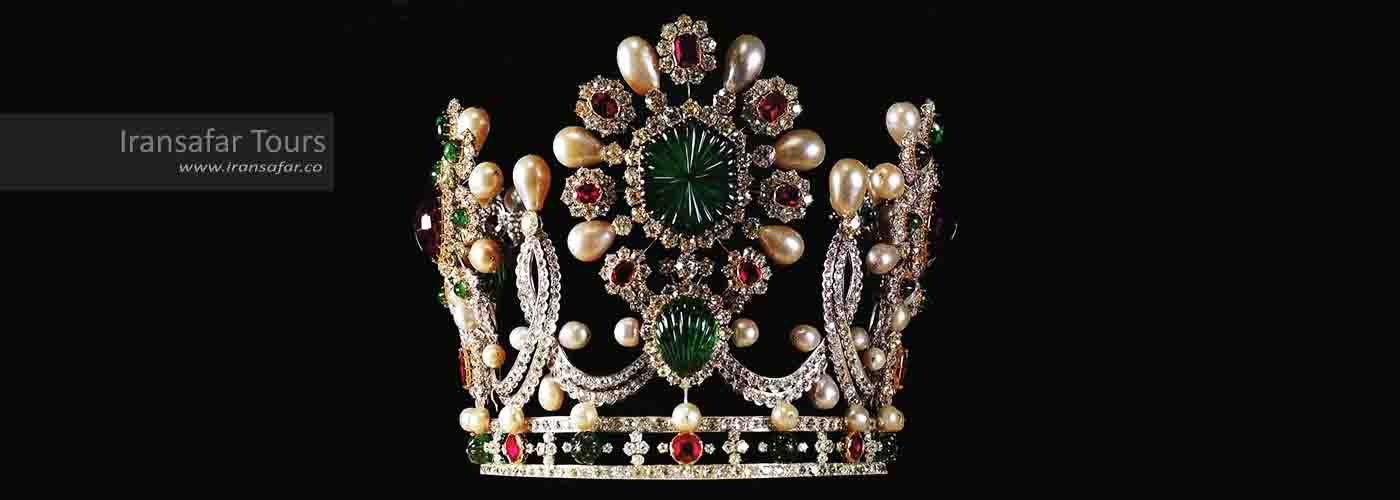 Farah Diba’s Crown, National Jewelry Museum, Tehran, Iran
Farah Diba’s Crown, National Jewelry Museum, Tehran, Iran
Iranian Crown Jewels Value
There is much to be said about this extraordinary collection, but one question cannot be answered definitively:
How much is the value? No one knows the answer to this question, because it contains gems that have no equal in the world. Iran’s national jewelry collection is artistic, historical, and unique in a situation that even the world’s most elite experts and evaluators have not been able to calculate real or approximate value.
13
Darband
The old village of Darband in north Tehran is one of the most spectacular places in the city. Due to its cool summers, Darband is one of the most visited attractions in Tehran. The Darband River runs through this village which is the beginning of the climbing route to the Tochal Mountains overlooking the city of Tehran. For those who are not interested in hiking, a chair lift is intended. The beginning of the route is full of small cafes and restaurants. These restaurants have a great reputation and are usually always busy, especially at night. If you are looking for an opportunity to escape the bustle and pollution of Tehran and relax in the heart of nature on traditional benches in a restaurant, Darband is a good choice.
✔ How to get to Darband
The closest metro station to Darband is Tajrish Station. You have to get a taxi from the station to Darband.
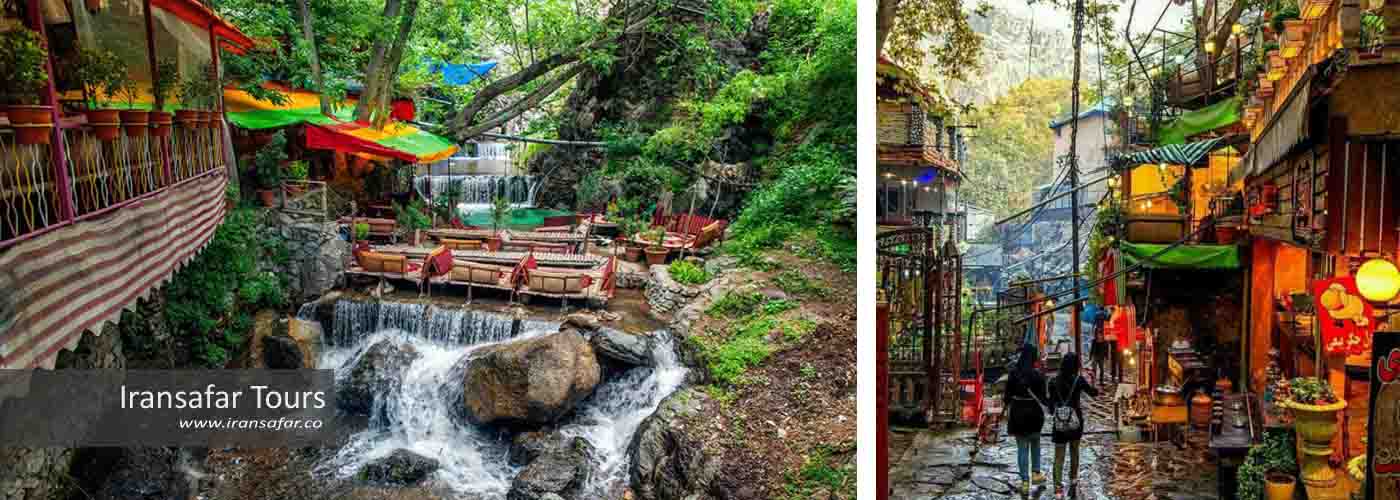 Darband, Tehran, Iran
Darband, Tehran, Iran
Tehran Fast Facts
- Tehran is the political and economic center and the capital of Iran
- Tehran is situated 112 km south of the Caspian Sea and on the foot of Alborz mountain range
- As of the latest statistics of 2016, the population of Tehran (Main Zone) is about 9 million
- The population in the larger metropolitan area of Tehran is about 15 million people
- It is the most populous city in Western Asia
- It is the 24th largest metropolitan area in the world and the 2nd largest metropolitan area in the Middle East (after Cairo)
- The city covers a total area of 730 Km2 – 27th largest city in the world.
- The average altitude is 1189 m above the sea level
Where to stay in Tehran
Tehran has many good hotels, but for many travelers, hotels located in the center of Tehran are more ideal, because they are close to most places of interest. Most of these hotels are also reasonably priced hotels in Tehran and offer guests facilities commensurate with their services. Here is a list of best hotels in Tehran


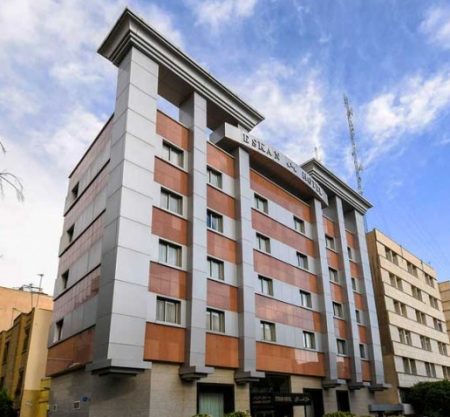
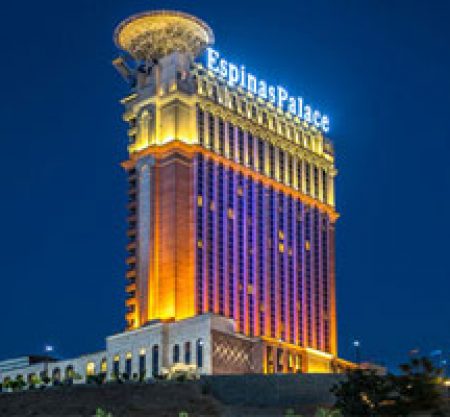
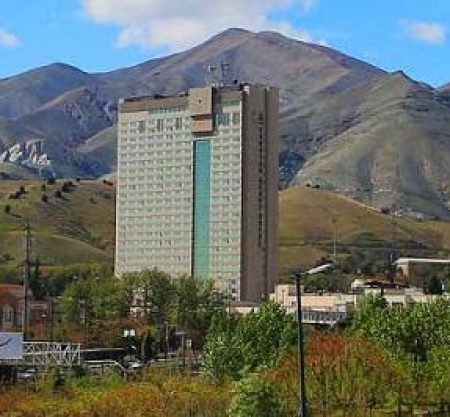
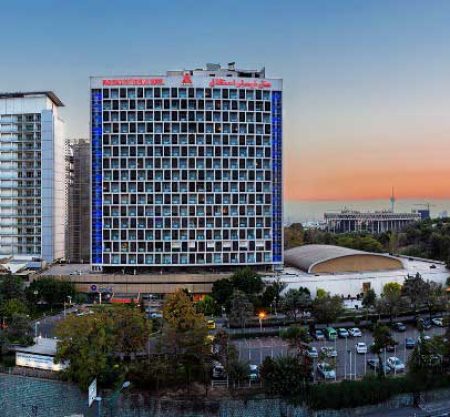
Comment (0)